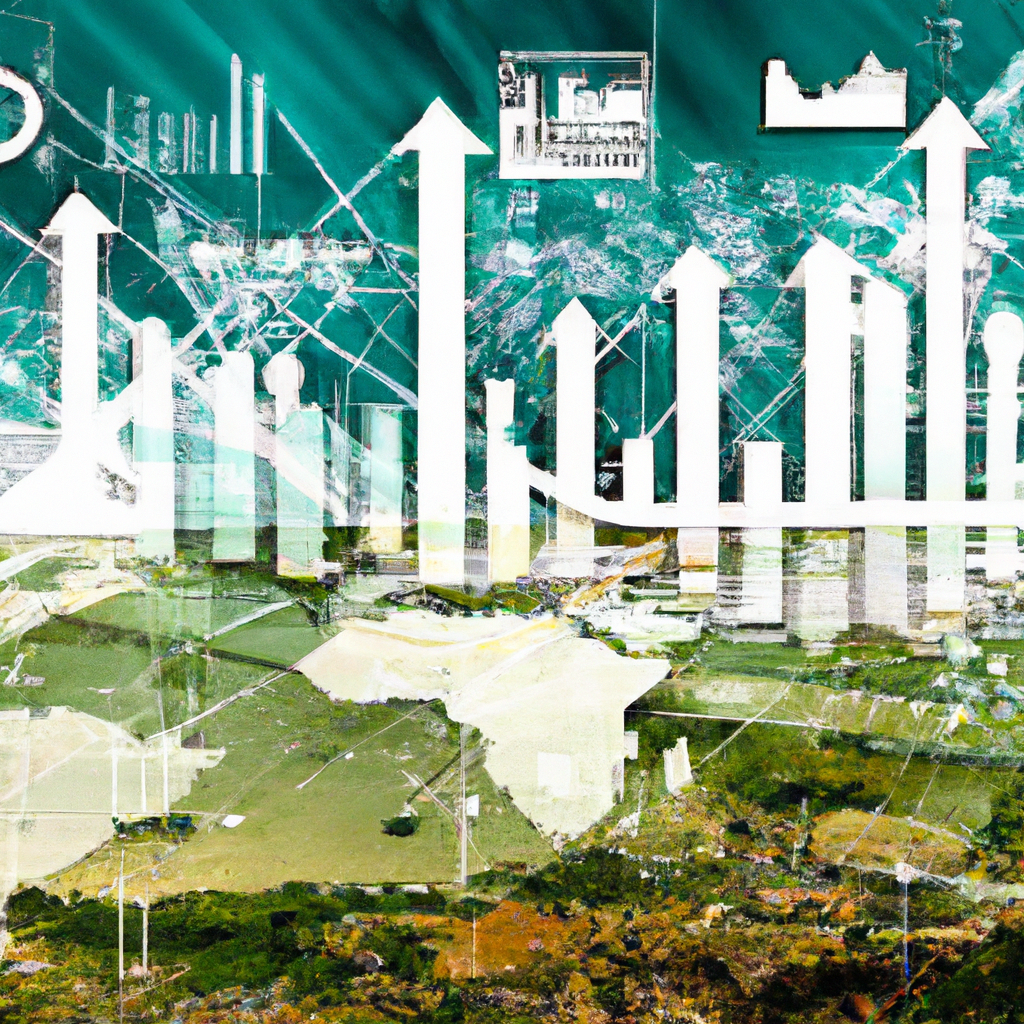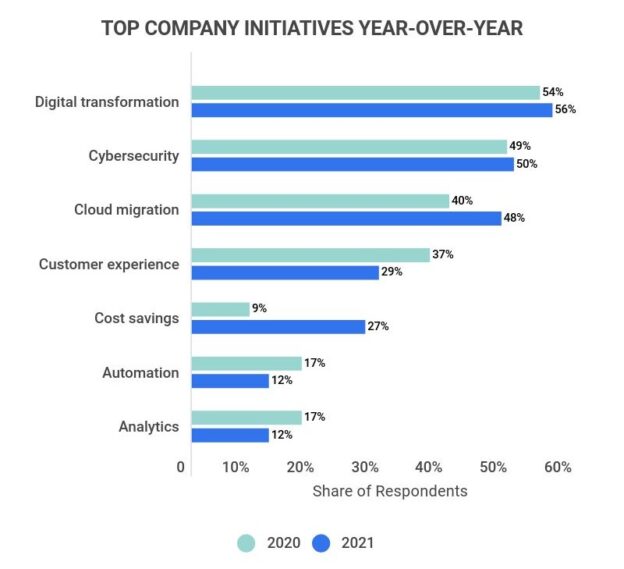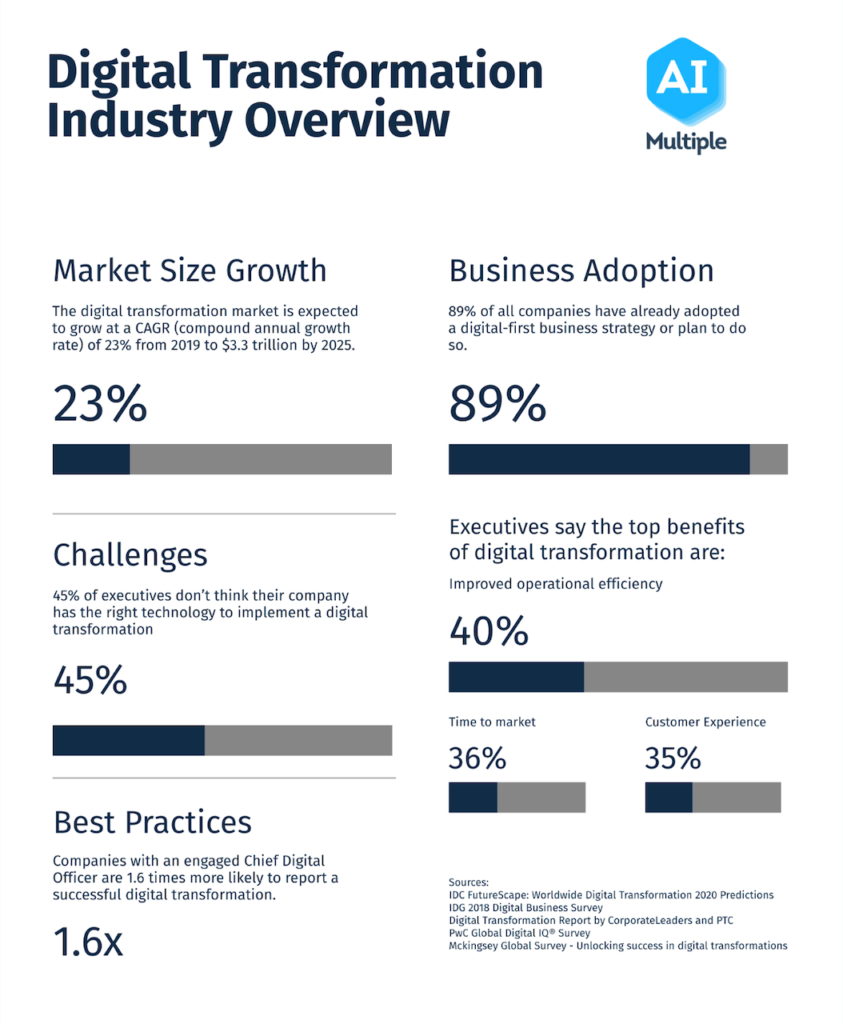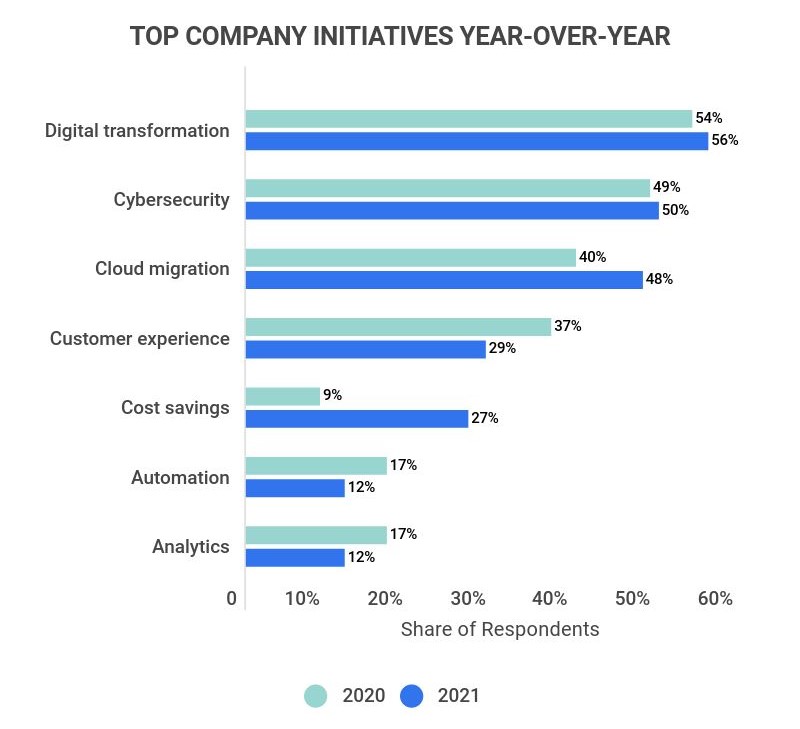Have you ever wondered which industries haven’t fully embraced digitalization? In the fast-paced world we live in, where technology continues to advance, it’s surprising to learn that certain sectors are still lagging behind. From manufacturing to healthcare, there are numerous industries that have yet to fully harness the power of digitalization. In this article, we will explore some of the main industries that are lacking in digitalization and discuss the potential roadblocks they face in adopting new technologies.
1. Healthcare
1.1 Medical Records Management
In the healthcare industry, one area that could benefit significantly from digitalization is medical records management. Currently, many healthcare organizations still rely on the traditional paper-based method of storing patient records. This can lead to various inefficiencies, including difficulties in accessing and sharing information, increased risk of errors, and limited data analytics capabilities.
By embracing digital technologies, such as electronic health records (EHR) systems, healthcare providers can streamline their medical records management processes. EHR systems allow for the electronic storage, retrieval, and exchange of patient health information securely. This not only improves the accessibility of patient records but also enhances the overall coordination of care.
1.2 Patient Engagement
Another area where digitalization can bring significant improvements is patient engagement. Traditionally, patients have had limited involvement in their own healthcare, with minimal access to their medical records and little control over their treatment options. However, with the advancements in technology, there is an opportunity to transform this dynamic.
Digital tools, such as patient portals and mobile health applications, can empower patients to take a more active role in managing their health. These platforms allow patients to access their medical records, schedule appointments, communicate with healthcare providers, and even monitor their vital signs remotely. By promoting patient engagement, digitalization can ultimately lead to better health outcomes and increased patient satisfaction.
1.3 Telemedicine
Telemedicine, or remote healthcare services, is another aspect of the healthcare industry that can greatly benefit from digitalization. In traditional healthcare settings, patients often face barriers such as distance, limited access to specialists, and long waiting times. However, with telemedicine, these obstacles can be overcome.
Through the use of video conferencing, remote monitoring devices, and secure data transmission, healthcare providers can deliver virtual consultations and follow-ups to patients. This not only provides convenience to patients by eliminating the need for travel but also enables healthcare professionals to reach underserved populations and provide timely care. Telemedicine has the potential to revolutionize healthcare delivery, particularly in rural areas and areas with limited healthcare resources.
1.4 Digital Healthcare Devices
Digital healthcare devices, also known as wearable devices or Internet of Things (IoT) devices, have the potential to transform the way healthcare is delivered. These devices, such as fitness trackers, smartwatches, and remote monitoring devices, collect real-time data on various health parameters.
By utilizing digital healthcare devices, healthcare providers can gather objective and continuous data on patients’ health status. This data can be used to detect early warning signs, monitor chronic conditions, and personalize treatment plans. Furthermore, these devices can empower individuals to take charge of their own health by promoting healthy behaviors and providing immediate feedback.
In conclusion, digitalization in the healthcare industry encompasses various aspects, including medical records management, patient engagement, telemedicine, and the use of digital healthcare devices. By embracing these technologies, healthcare providers can improve the efficiency and effectiveness of care delivery, enhance patient engagement and satisfaction, and ultimately, improve health outcomes. It is essential for the healthcare industry to prioritize digitalization and leverage the potential of technology to transform healthcare services.
2. Construction
2.1 Project Management
Digitalization in the construction industry can revolutionize project management processes. Traditionally, construction projects involve numerous stakeholders, complex schedules, and extensive documentation. However, through the use of digital tools and software, project management can be streamlined, leading to improved efficiency, collaboration, and cost-effectiveness.
Digital project management tools, such as cloud-based platforms and collaboration software, enable real-time communication and document sharing among team members. This facilitates better coordination and reduces the risk of errors or delays. Additionally, features such as task scheduling, progress tracking, and budget management allow for more accurate project monitoring and control.
2.2 Building Information Modeling (BIM)
Building Information Modeling (BIM) is a digital representation of a construction project that incorporates geometric and non-geometric information. It allows for the visualization, collaboration, and simulation of the entire construction process. BIM offers several benefits, such as improved design coordination, clash detection, and cost estimation.
By adopting BIM technologies, construction companies can enhance collaboration among architects, engineers, and contractors. BIM enables real-time information sharing, leading to fewer coordination issues and potential clashes during construction. Furthermore, BIM can improve cost estimation accuracy, reduce rework, and ultimately result in more efficient and sustainable building practices.
2.3 Safety Compliance
Safety compliance is a critical aspect of the construction industry. While safety regulations are in place, implementing and monitoring compliance can be challenging. However, digital technologies can provide solutions to enhance safety protocols and prevent accidents on construction sites.
Digital tools, such as mobile applications and wearable devices, can help monitor workers’ compliance with safety protocols in real-time. For example, wearable devices can collect data on workers’ vital signs and alert supervisors if any safety risks are detected. Mobile applications can also provide quick access to safety guidelines and enable workers to report hazards immediately.
2.4 Equipment Tracking and Maintenance
Tracking and maintaining construction equipment is another area where digitalization can bring significant improvements. Construction companies often own and operate a large fleet of machinery and equipment, which requires regular maintenance and replacement scheduling.
Digital tools, such as asset management software and Internet of Things (IoT) sensors, can streamline equipment tracking and maintenance processes. For example, IoT sensors can collect data on equipment usage, performance, and potential faults. This data can then be analyzed to optimize maintenance schedules, reduce equipment downtime, and extend the lifespan of the equipment.
In conclusion, digitalization in the construction industry can transform project management, enhance collaboration, improve safety compliance, and optimize equipment tracking and maintenance. By embracing digital technologies, construction companies can streamline processes, reduce costs, and enhance overall project outcomes. It is crucial for the construction industry to embrace and invest in digital solutions to stay competitive in the rapidly evolving landscape.

3. Agriculture
3.1 Precision Farming
Precision farming, also known as precision agriculture, involves the use of digital technologies to optimize agricultural practices. Traditional farming methods often rely on one-size-fits-all approaches, leading to inefficiencies and environmental impacts. However, digitalization can enable farmers to adopt a more targeted and data-driven approach.
Digital tools, such as geographic information systems (GIS) and remote sensing technologies, can provide accurate data on soil conditions, weather patterns, and plant health. This data can help farmers make informed decisions regarding irrigation, fertilizer application, and pest control. By optimizing these practices, farmers can enhance crop yields, minimize resource wastage, and reduce environmental impacts.
3.2 Crop Monitoring and Management
Digitalization can also revolutionize crop monitoring and management processes in agriculture. Traditionally, farmers have relied on visual inspections and manual measurements to monitor crop health and detect issues. However, digital technologies can provide more accurate and timely information, leading to better-informed decisions.
Satellite imagery, drones, and IoT sensors can collect real-time data on crop growth, soil moisture levels, and pest infestations. This data can be analyzed to detect anomalies, predict crop yields, and identify areas that require immediate attention. Furthermore, advanced analytics and machine learning algorithms can help farmers optimize crop management strategies, identify patterns, and make data-driven predictions.
3.3 Supply Chain Efficiency
Digitalization can also play a significant role in improving supply chain efficiency in the agricultural industry. Timely and accurate information flow is crucial for agricultural supply chains, which involve multiple stakeholders, perishable goods, and complex logistics.
By adopting digital supply chain management platforms and technologies, farmers can streamline the flow of information, from production to distribution. This allows for better coordination, improved inventory management, and reduced wastage. Real-time data on supply and demand can enable farmers to make informed decisions regarding planting schedules, crop selection, and pricing strategies, ultimately leading to improved profitability and sustainability.
3.4 Livestock Management
Livestock management is another area of agriculture that could benefit from digitalization. Traditional livestock management methods often rely on manual monitoring, which can be time-consuming and prone to errors. However, digital technologies offer tools to automate and optimize livestock management processes.
For example, wearable devices and sensors can be used to monitor animal health, behavior, and production parameters in real-time. This data can help farmers detect early signs of disease or distress, optimize feeding and breeding practices, and improve overall animal welfare. Furthermore, digital technologies can enable automated data collection and analysis, reducing the administrative burden on farmers and allowing for more informed decision-making.
In conclusion, digitalization in agriculture has the potential to revolutionize precision farming, crop monitoring and management, supply chain efficiency, and livestock management. By embracing digital technologies, farmers can optimize resource usage, enhance productivity, minimize environmental impacts, and improve overall sustainability. It is essential for the agricultural industry to harness the power of digitalization to address current challenges and ensure future food security.
4. Transportation and Logistics
4.1 Fleet Management
Fleet management involves the efficient and cost-effective management of a company’s vehicle fleet. Traditional fleet management systems often rely on manual record-keeping and face challenges such as inefficient routing, high fuel consumption, and poor vehicle maintenance. However, digitalization can transform fleet management processes and improve overall operational efficiency.
Digital fleet management solutions offer features such as GPS tracking, real-time vehicle monitoring, and route optimization. With the help of these technologies, companies can track and manage their vehicles more effectively, reduce fuel costs by optimizing routes, and ensure timely delivery. Additionally, digital fleet management systems provide data on vehicle performance and maintenance requirements, enabling proactive maintenance planning and reducing downtime.
4.2 Route Optimization
Route optimization is a crucial aspect of transportation and logistics, as it directly impacts fuel consumption, delivery times, and customer satisfaction. Traditional route planning methods often rely on manual calculations and result in suboptimal routes. However, digital technologies can greatly improve the route optimization process.
Digital route optimization software uses algorithms and real-time data to determine the most efficient paths for vehicles. Factors such as traffic conditions, road closures, and delivery schedules are taken into account to generate optimal routes. By adopting digital route optimization solutions, transportation companies can reduce fuel costs, increase vehicle utilization, and enhance overall operational efficiency.
4.3 Warehouse Operations
Digitalization can also revolutionize warehouse operations in the transportation and logistics industry. Traditional warehouse management systems often rely on manual processes, which can lead to errors, delays, and inefficiencies. However, digital technologies offer solutions to automate and optimize warehouse operations.
Digital warehouse management systems provide features such as inventory tracking, order management, and barcode scanning. These technologies enable real-time visibility of inventory, improve picking and packing processes, and enhance overall order accuracy. Furthermore, digital warehouse management systems can integrate with other enterprise systems, such as transportation management and customer relationship management, leading to a more holistic and efficient supply chain management approach.
4.4 Cargo Tracking and Security
Cargo tracking and security are critical aspects of the transportation and logistics industry. Traditional methods of cargo tracking, such as manual record-keeping and paper-based documentation, can be time-consuming and prone to errors. However, digital technologies offer solutions to enhance cargo tracking and security.
Digital cargo tracking systems utilize technologies such as GPS, RFID, and blockchain to provide real-time tracking and secure documentation of cargo. These technologies enable transportation companies to monitor the location and condition of the cargo throughout the supply chain journey. Additionally, digital cargo tracking systems provide enhanced security measures, such as tamper-proof seals and digital certificates, to safeguard against theft or unauthorized access.
In conclusion, digitalization in the transportation and logistics industry can significantly improve fleet management, route optimization, warehouse operations, and cargo tracking and security. By embracing digital technologies, companies can enhance operational efficiency, reduce costs, and improve customer satisfaction. It is essential for the transportation and logistics industry to embrace digitalization and leverage the potential of technology to stay competitive in a rapidly evolving landscape.

5. Education
5.1 Online Learning Platforms
Digitalization in the education sector has revolutionized learning and teaching methods. Online learning platforms provide students with access to a wide range of educational resources, courses, and materials. This enables individuals to learn at their own pace and from anywhere in the world. Online learning platforms often incorporate interactive features, such as virtual classrooms and discussion forums, which promote student engagement and collaboration.
5.2 Student Assessment and Progress Tracking
Digitalization can also improve student assessment and progress tracking in education. Traditional assessment methods, such as written exams and paper-based assignments, can be time-consuming for both students and teachers. Digital assessment tools, such as online quizzes and automated grading systems, streamline the assessment process and provide immediate feedback to students.
Additionally, digital progress tracking systems allow educators to monitor students’ academic progress in real-time. These systems can track attendance, assignment submission, and test scores, providing insights into students’ strengths and areas for improvement. This data-driven approach enables personalized instruction, early intervention for struggling students, and targeted support.
5.3 Digital Libraries and Resources
Digital libraries and resources expand access to educational materials and promote lifelong learning. Digitalization enables educational institutions to digitize their libraries and offer online access to a vast collection of books, articles, journals, and multimedia resources. Digital libraries often provide advanced search capabilities, annotation features, and remote access, making it convenient for students and educators to access and utilize educational resources.
5.4 Collaboration Tools
Collaboration tools facilitate effective communication and teamwork among students and educators. Digital platforms, such as virtual collaboration spaces and project management tools, enable students to collaborate on group projects, share documents, and communicate synchronously or asynchronously. These tools foster a collaborative learning environment, encourage knowledge sharing, and develop essential 21st-century skills, such as communication, critical thinking, and problem-solving.
In conclusion, digitalization in education has transformed learning and teaching methods, enabling access to online learning platforms, improving student assessment and progress tracking, providing digital libraries and resources, and facilitating collaboration among students and educators. By embracing digital technologies, educational institutions can enhance the quality of education, expand access to resources, and prepare students for the digital age. It is crucial for the education sector to invest in digitalization efforts to meet the evolving needs of learners and educators.
6. Manufacturing
6.1 Supply Chain Integration
Digitalization in manufacturing enables seamless integration of supply chains, from raw material sourcing to finished product delivery. Traditional manufacturing supply chains often face challenges such as limited visibility, lack of coordination, and poor communication. However, digital technologies offer solutions to streamline and optimize supply chain operations.
Digital supply chain integration platforms provide real-time visibility into supply chain processes, enabling manufacturers to track inventory levels, monitor production schedules, and manage supplier relationships. This enhanced visibility improves decision-making, reduces lead times, and minimizes the risk of stockouts or overstock situations. Additionally, digital technologies such as blockchain can enhance supply chain transparency, traceability, and trust among stakeholders.
6.2 Smart Factory Automation
Smart factory automation involves the use of digital technologies, such as robotics, artificial intelligence, and Internet of Things (IoT), to automate and optimize manufacturing processes. Traditional manufacturing systems often rely on manual labor, which can be prone to errors, inefficiencies, and safety risks. However, digitalization offers opportunities to enhance productivity, improve quality, and reduce costs.
Through the deployment of robotics and automation technologies, manufacturers can streamline production processes, increase operational efficiency, and improve product consistency. Artificial intelligence and machine learning algorithms can enable predictive maintenance, optimize production schedules, and detect anomalies in real-time. Furthermore, IoT sensors can collect data on machine performance and environmental conditions, facilitating data-driven decision-making and enabling the implementation of smart manufacturing practices.
6.3 Quality Control and Inspection
Digitalization can also revolutionize quality control and inspection processes in manufacturing. Traditional methods often rely on manual inspection, which can be time-consuming and prone to errors. Digital technologies offer solutions to automate and enhance quality control procedures.
Digital quality control systems utilize technologies such as computer vision, machine learning, and data analytics to inspect products and identify defects. These technologies can perform automated visual inspections, analyze data from sensors, and detect deviations from quality standards. Additionally, digital quality control systems enable real-time data collection and analysis, ensuring early detection of quality issues and enabling proactive measures to maintain product quality.
6.4 Product Lifecycle Management
Digitalization in manufacturing also extends to product lifecycle management (PLM), which involves managing a product from its conceptualization to its disposal. Traditional PLM methods often involve extensive paperwork, disconnected systems, and limited collaboration. However, digital technologies offer solutions to optimize product development, improve collaboration, and enhance overall PLM processes.
Digital PLM systems provide a centralized platform for managing product data, documents, and collaboration among stakeholders. These systems enable simultaneous engineering, version control, and traceability throughout the product lifecycle. Additionally, digital PLM systems can integrate with other enterprise systems, such as enterprise resource planning (ERP) and customer relationship management (CRM), leading to more efficient and holistic product management.
In conclusion, digitalization in manufacturing can transform supply chain integration, enable smart factory automation, enhance quality control and inspection, and optimize product lifecycle management. By embracing digital technologies, manufacturers can improve productivity, quality, and sustainability. It is essential for the manufacturing industry to embrace digitalization and leverage the potential of technology to stay competitive and meet evolving customer demands.
7. Hospitality and Tourism
7.1 Online Booking and Reservation Systems
Digitalization has revolutionized the hospitality and tourism industry, making it more convenient and accessible for travelers. Online booking and reservation systems enable individuals to search, compare, and book accommodations, flights, and other travel services online.
Digital platforms, such as travel websites and mobile applications, provide real-time information on availability, pricing, and customer reviews. This empowers travelers to make informed decisions based on their preferences and budget. Additionally, digital booking and reservation systems offer features such as instant confirmation, secure payment options, and the ability to manage bookings remotely.
7.2 Personalized Customer Experience
Digitalization can also enhance the customer experience in the hospitality and tourism industry by enabling personalized services. Traditional hospitality services often have limited knowledge about individual preferences, leading to a generic guest experience. However, digital technologies offer opportunities to gather and analyze guest data to deliver personalized experiences.
Customer relationship management (CRM) systems and guest profiling tools enable hotels and travel companies to collect and analyze data on guest preferences, past behaviors, and feedback. This data can be used to personalize services, offer tailored recommendations, and create memorable experiences. For example, hotels can offer personalized room amenities, restaurants can provide customized menu options, and travel companies can suggest personalized itineraries based on individual interests.
7.3 Digital Marketing and Promotions
Digital marketing and promotions have become essential for the hospitality and tourism industry to attract and engage customers. Traditional marketing methods, such as print advertisements and brochures, have limited reach and are difficult to track. However, digital marketing channels offer wider audience reach and provide real-time data on campaign performance.
Digital marketing strategies, such as search engine optimization (SEO), pay-per-click (PPC) advertising, and social media marketing, enable hotels and travel companies to target specific customer segments, increase brand visibility, and drive website traffic. Additionally, digital marketing tools offer analytics and tracking capabilities, allowing companies to measure the effectiveness of their campaigns, optimize their marketing spend, and make data-driven marketing decisions.
7.4 Visitor Management
Visitor management is an important aspect of hospitality and tourism, as it impacts safety, security, and overall guest experience. Traditional visitor management methods often rely on manual record-keeping and face challenges such as long wait times, security risks, and inefficiencies. However, digital technologies offer solutions to enhance visitor management processes.
Digital visitor management systems automate and streamline the check-in process, reducing wait times and improving the overall guest experience. These systems often include features such as self-service kiosks, digital registration forms, and visitor identification technologies. Additionally, digital visitor management systems can integrate with access control systems and security surveillance systems, enhancing safety and security measures in hotels and other tourist establishments.
In conclusion, digitalization has transformed the hospitality and tourism industry, enabling online booking and reservation systems, personalized customer experiences, digital marketing and promotions, and improved visitor management. By embracing digital technologies, hotels and travel companies can enhance the customer experience, attract more travelers, and improve business efficiency. It is crucial for the hospitality and tourism industry to leverage digitalization opportunities to stay competitive in a rapidly evolving market.
8. Retail
8.1 E-commerce and Online Shopping
Digitalization has had a significant impact on the retail industry, transforming the way consumers shop and interact with brands. E-commerce and online shopping platforms have revolutionized retail by offering convenience, a wide variety of products, and personalized shopping experiences.
E-commerce platforms enable retailers to sell products online, reach a global customer base, and operate 24/7. These platforms often include features such as product catalogs, customer reviews, and secure payment options. Additionally, personalized recommendations and targeted marketing campaigns based on customer behavior and preferences enhance the online shopping experience.
8.2 Inventory Management
Inventory management is a critical aspect of retail operations, and digitalization offers solutions to streamline and optimize this process. Traditional inventory management methods often rely on manual stock counting, which can be time-consuming and prone to errors. However, digital technologies provide real-time visibility into inventory levels, automate replenishment processes, and enable efficient order fulfillment.
Digital inventory management systems utilize technologies such as barcode scanning, RFID, and data analytics to track inventory levels, automate reordering, and optimize stock levels. By adopting digital inventory management systems, retailers can minimize stockouts, reduce excess inventory, and improve overall inventory accuracy. Additionally, data analytics can provide insights into demand patterns, sales trends, and customer preferences, enabling more informed inventory planning and purchasing decisions.
8.3 Customer Relationship Management (CRM)
Digitalization has transformed customer relationship management in the retail industry. Traditional CRM methods often involve manual record-keeping and limited customer insights. However, digital CRM systems offer retailers a comprehensive view of their customers, enabling personalized engagement and targeted marketing campaigns.
Digital CRM systems collect and analyze customer data from various touchpoints, such as online purchases, loyalty programs, and social media interactions. This data can be used to create detailed customer profiles, track customer behavior, and deliver personalized offers and recommendations. Additionally, digital CRM systems enable retailers to implement customer loyalty programs, manage customer feedback, and provide efficient customer support.
8.4 Point-of-Sale (POS) Systems
Point-of-Sale (POS) systems are essential in retail operations, and digitalization has significantly improved their functionality and efficiency. Traditional cash registers and manual transaction processing methods often result in long wait times, potential errors, and limited data insights. However, digital POS systems offer numerous advantages, including faster transaction processing, real-time inventory updates, and enhanced data analytics capabilities.
Digital POS systems utilize technologies such as barcode scanning, contactless payments, and cloud-based software to enable fast and accurate payment processing. Additionally, digital POS systems integrate with inventory management systems, CRM systems, and financial software, providing real-time insights into sales performance, inventory levels, and customer behavior. This data-driven approach enables retailers to make informed business decisions, optimize pricing and promotions, and enhance overall operational efficiency.
In conclusion, digitalization has transformed the retail industry by enabling e-commerce and online shopping platforms, streamlining inventory management processes, enhancing customer relationship management, and optimizing point-of-sale systems. By embracing digital technologies, retailers can expand their customer reach, improve inventory control, and provide personalized shopping experiences. It is crucial for the retail industry to leverage digitalization opportunities to stay competitive and meet evolving customer expectations.
9. Energy
9.1 Smart Grid Management
Digitalization has the potential to revolutionize the energy industry by enabling the efficient management of smart grids. Traditional energy grids often face challenges such as limited visibility, inefficient transmission and distribution, and high energy losses. However, digital technologies offer solutions to optimize grid operations, enhance energy efficiency, and integrate renewable energy sources.
Smart grid management systems utilize sensors, IoT devices, and advanced analytics to collect and analyze real-time data on energy generation, consumption, and distribution. This data enables grid operators to optimize grid operations, balance supply and demand, and detect and respond to outages or equipment failures. Additionally, smart grid management systems enable real-time monitoring and control of energy flows, enhancing overall grid reliability and resilience.
9.2 Energy Usage Monitoring
Digitalization can also empower consumers to monitor and manage their energy usage more efficiently. Traditional energy consumption monitoring often relies on manual meter readings, leading to limited visibility and delayed information. However, digital energy usage monitoring systems offer real-time data on energy consumption, enabling consumers to make informed decisions and optimize energy usage.
Smart meters and energy monitoring devices can collect data on energy consumption at a granular level. This data can be visualized through user-friendly interfaces, providing consumers with insights into their energy usage patterns, costs, and potential savings. Additionally, digital energy usage monitoring systems can integrate with home automation devices, allowing consumers to automate energy-consuming appliances and optimize energy usage based on preferences and time-of-use tariffs.
9.3 Asset Performance Optimization
Digitalization offers solutions to optimize asset performance in the energy industry. Traditional asset management methods often rely on reactive maintenance, leading to increased downtime, maintenance costs, and suboptimal asset performance. However, digital technologies enable predictive and proactive maintenance strategies, enhancing asset lifespan and operational efficiency.
Digital asset performance optimization systems utilize real-time data from sensors and IoT devices to monitor asset health, detect anomalies, and predict maintenance requirements. This enables energy companies to schedule maintenance activities when necessary, reducing downtime and optimizing asset utilization. Additionally, data analytics and machine learning algorithms can enable asset performance optimization, identifying patterns, and optimizing asset configurations for improved efficiency and reliability.
9.4 Renewable Energy Integration
Digitalization plays a significant role in integrating renewable energy sources into the existing energy infrastructure. Traditional energy systems often face challenges when integrating renewable energy, such as intermittent power generation and grid stability issues. However, digital technologies offer solutions to optimize renewable energy integration and support the transition to a cleaner and more sustainable energy mix.
Digital renewable energy management systems enable real-time monitoring and control of renewable energy generation and storage. These systems utilize advanced forecasting models, data analytics, and grid optimization algorithms to ensure smooth integration and utilization of renewable energy. Additionally, digital technologies enable demand response programs, where energy users can adjust their consumption based on real-time energy availability and pricing, further optimizing renewable energy integration and grid stability.
In conclusion, digitalization in the energy industry can revolutionize smart grid management, enhance energy usage monitoring, optimize asset performance, and support renewable energy integration. By embracing digital technologies, energy companies can improve operational efficiency, enhance grid reliability, and accelerate the transition to a sustainable energy future. It is crucial for the energy industry to invest in digitalization efforts to meet the evolving energy demands and sustainability goals.
10. Legal
10.1 Case Management and Document Automation
Digitalization has the potential to transform case management and document automation processes in the legal industry. Traditional legal practices often involve manual document preparation, storage, and retrieval, leading to inefficiencies, delays, and high administrative costs. However, digital technologies offer solutions to automate and streamline these processes.
Case management software provides digital platforms for storing and organizing legal documents, case files, and client information. These platforms enable easy retrieval of documents, collaboration among legal professionals, and efficient workflow management. Additionally, document automation tools utilize templates and data integration to automate the creation of legal documents, reducing errors and saving time. By adopting digital case management and document automation solutions, law firms can improve productivity, increase client satisfaction, and reduce administrative burdens.
10.2 Digital Contract Management
Digitalization can also enhance contract management processes in the legal industry. Traditional contract management often involves manual drafting, negotiation, and tracking of contracts, which can be time-consuming and prone to errors. However, digital technologies offer solutions to automate and improve contract management.
Digital contract management platforms enable organizations to store, manage, and track contracts digitally. These platforms often include features such as template libraries, version control, and contract lifecycle management. By adopting digital contract management solutions, legal professionals can streamline contract creation, negotiate terms more efficiently, and ensure compliance with contract obligations. Additionally, advanced analytics and reporting capabilities can provide insights into contract performance, risks, and opportunities.
10.3 Electronic Discovery
Electronic discovery, also known as e-discovery, refers to the process of identifying, preserving, and analyzing electronic information for legal proceedings. Traditional e-discovery methods often involve manual data collection and processing, leading to high costs, delays, and potential data risks. However, digital technologies offer solutions to automate and optimize e-discovery processes.
Digital e-discovery tools utilize data analytics, machine learning, and natural language processing to analyze large volumes of electronic data. These tools can search, filter, and extract relevant information from various types of electronic documents and communication records. Additionally, digital e-discovery platforms offer features such as metadata preservation, data security, and collaboration among legal teams. By embracing digital e-discovery solutions, legal professionals can improve efficiency, reduce costs, and ensure compliance with legal obligations.
10.4 Client Collaboration Portals
Digitalization also enables secure and efficient collaboration between legal professionals and clients. Traditional client collaboration often involves face-to-face meetings, paper-based document exchange, and limited communication channels. However, digital technologies offer solutions to enhance client collaboration and improve client service.
Client collaboration portals provide digital platforms for legal professionals and clients to exchange documents, discuss case details, and track progress. These portals offer secure communication channels, document sharing capabilities, and task management features. By adopting client collaboration portals, law firms can enhance client engagement, provide timely updates, and improve overall client satisfaction. Additionally, client collaboration portals enable remote access to case information, enabling 24/7 availability and convenience for clients.
In conclusion, digitalization in the legal industry can transform case management and document automation, enhance contract management, streamline e-discovery processes, and improve client collaboration. By embracing digital technologies, law firms can improve efficiency, reduce costs, and enhance client service. It is essential for the legal industry to invest in digitalization efforts to stay competitive, improve operational effectiveness, and meet evolving client expectations.









